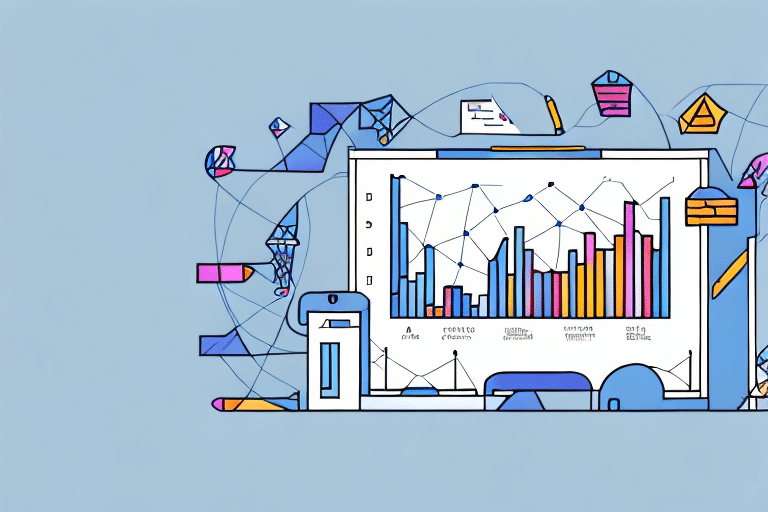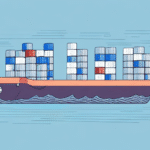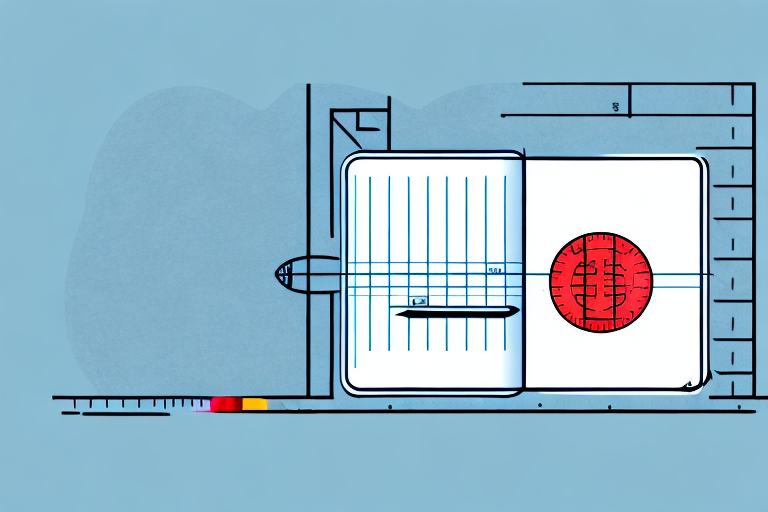What is CBM? An Overview of the Cost-Benefit Model
In the world of business decision-making, the Cost-Benefit Model (CBM) is a widely adopted tool used to assess whether a project or investment is worthwhile. CBM is a systematic approach that quantifies the costs and benefits associated with any course of action a business may take. By doing so, it provides a framework to evaluate whether the potential benefits outweigh the costs involved.
History and Evolution of CBM
The origins of CBM can be traced back to the early 19th century. The concept was first introduced by French economists, who used it as a method for exploring the relationship between production costs and resulting benefits. Over the years, CBM has undergone significant developments and enhancements, with different variations and methodologies being adopted across various industries and sectors.
One of the most significant developments in the evolution of CBM was the introduction of Computerized Maintenance Management Systems (CMMS) in the 1980s. This innovation allowed for the automation of maintenance processes and the collection of data, which could be used to optimize maintenance schedules and improve equipment reliability. According to a Forbes article on CBM evolution, today CBM continues to evolve with the integration of new technologies such as the Internet of Things (IoT) and predictive analytics. These technologies enable real-time monitoring and analysis of equipment performance, further enhancing the effectiveness of CBM.
Key Concepts of CBM
Identifying Costs and Benefits
The foundation of CBM lies in accurately identifying and quantifying all associated costs and benefits of a project or investment. This includes direct costs like capital expenditures and operational expenses, as well as indirect costs such as opportunity costs and potential risks. Benefits may encompass increased revenue, cost savings, improved efficiency, and intangible gains like enhanced brand reputation.
Evaluating Relative Importance
Once costs and benefits are identified, CBM involves evaluating their relative importance. This step often requires assigning monetary values to both tangible and intangible factors to facilitate comparison. Utilizing tools like Net Present Value (NPV) and Internal Rate of Return (IRR) can aid in this evaluation by considering the time value of money.
Applying a Discount Rate
CBM also involves applying a discount rate to future cash flows to account for the time value of money. This ensures that future benefits and costs are appropriately weighted against present values, providing a clearer picture of the project's financial viability. The choice of discount rate can significantly impact the CBM outcome and should reflect the project's risk profile and the company's cost of capital.
Opportunity Cost and Risk Assessment
Another critical concept in CBM is opportunity cost—the potential benefits forgone by choosing one alternative over another. Additionally, risk assessment plays a pivotal role in CBM by evaluating the likelihood and potential impact of various risks that may affect the project's costs and benefits. By identifying and quantifying these risks, CBM helps project managers make more informed decisions and develop contingency plans to mitigate potential losses.
Applications of CBM in Business Decision Making
Evaluating Investments and Operations
CBM is essential for evaluating major investments such as capital expenditure projects, mergers, and acquisitions. By systematically analyzing the costs and benefits, businesses can determine the financial viability and strategic alignment of potential investments. For instance, a study by Harvard Business Review highlights how companies use CBM to prioritize projects that offer the highest return on investment.
Risk Assessment and Opportunity Cost
Beyond evaluating investments, CBM serves as a tool for risk assessment and understanding opportunity costs. By considering potential risks and the benefits of alternative projects, businesses can make more balanced and strategic decisions. This approach ensures that resources are allocated to projects that offer the most significant net benefits while minimizing potential downsides.
Performance Assessment
CBM is also utilized to assess the performance of existing business operations. By analyzing the costs and benefits of current processes, companies can identify areas for improvement, streamline operations, and enhance profitability. Regular CBM reviews help ensure that business activities remain aligned with organizational goals and market conditions.
Advantages and Disadvantages of CBM
Advantages
- Objective Decision-Making: CBM provides a consistent and objective framework for evaluating projects, reducing bias in decision-making.
- Comprehensive Analysis: It considers both tangible and intangible factors, offering a holistic view of a project's potential impact.
- Resource Allocation: Helps in prioritizing projects that offer the highest net benefits, ensuring optimal use of resources.
- Risk Mitigation: Incorporates risk assessment, enabling businesses to anticipate and plan for potential challenges.
Disadvantages
- Data Intensive: Requires accurate and comprehensive data, which can be time-consuming and costly to gather.
- Assumptions and Estimates: Relies on assumptions about future costs and benefits, which may not always hold true.
- Intangible Factors: Difficulty in quantifying intangible benefits and costs, such as employee morale or brand reputation.
- Short-Term Focus: May lead to favoring projects with immediate benefits over those with long-term advantages.
Despite these drawbacks, CBM remains a valuable tool when combined with other decision-making frameworks and when its limitations are acknowledged.
Implementing CBM in Your Business
Step-by-Step Guide
- Identify the Project or Investment: Clearly define the scope, objectives, and expected outcomes of the project.
- Gather Data: Collect detailed information on all relevant costs and benefits, including direct, indirect, tangible, and intangible factors.
- Determine the Discount Rate: Establish an appropriate discount rate based on the company's cost of capital and the project's risk profile.
- Calculate Net Present Value (NPV): Use NPV to assess the present value of future cash flows, ensuring costs and benefits are accurately weighted over time.
- Perform the CBM Calculation: Compare the total discounted benefits against the total discounted costs to determine the project's viability.
- Make an Informed Decision: Based on the CBM results, decide whether to proceed with, modify, or reject the project.
- Monitor and Review: Continuously track the project's performance against initial CBM projections and make necessary adjustments.
Common Mistakes to Avoid
- Using Inaccurate Data: Underestimating costs or overestimating benefits can lead to flawed CBM outcomes.
- Ignoring Long-Term Impacts: Failing to consider long-term benefits and costs may result in short-sighted decision-making.
- Overlooking Intangible Factors: Neglecting to account for non-monetary benefits and costs can provide an incomplete analysis.
- Not Involving Stakeholders: Excluding key stakeholders can lead to a lack of support and potential oversights in the analysis.
- Using CBM in Isolation: Relying solely on CBM without considering other decision-making tools can limit the comprehensiveness of the evaluation.
Avoiding these mistakes ensures that CBM provides a reliable foundation for making strategic business decisions.
Real-World Examples of CBM
Manufacturing
In the manufacturing sector, CBM is often used to determine the most cost-effective location for new facilities. For example, a manufacturing company may perform a CBM analysis to evaluate different locations based on factors like labor costs, transportation expenses, and tax incentives. This approach ensures that the chosen location offers the highest net benefits, optimizing operational efficiency and profitability.
Healthcare
CBM plays a critical role in healthcare, particularly in managing chronic conditions such as diabetes and hypertension. By regularly collecting and analyzing data on patients' vital signs and symptoms, healthcare providers can identify potential health issues before they become severe. This proactive approach not only improves patient outcomes but also reduces long-term healthcare costs.
Transportation
In the transportation industry, CBM is utilized to enhance safety and efficiency. For instance, CBM can monitor the condition of vehicles and predict when maintenance is needed, thereby reducing the risk of breakdowns and accidents. Additionally, CBM can optimize routes and schedules, leading to decreased fuel consumption and improved delivery times.
CBM Compared to Other Business Models
CBM is one of several business models used for decision-making, each with its unique strengths and applications. For example, Decision Tree Analysis is another popular tool that helps businesses visualize decision paths and outcomes. However, unlike CBM, Decision Tree Analysis does not typically quantify the costs and benefits associated with each decision branch.
Similarly, Net Present Value (NPV) is commonly used to evaluate the profitability of projects by calculating the present value of expected cash flows. While NPV focuses on financial returns, CBM provides a more comprehensive analysis by incorporating both financial and non-financial factors, including risk and opportunity costs.
Cost-Benefit Analysis (CBA) is another model similar to CBM. However, CBA typically does not account for uncertainty and risk to the same extent as CBM, which uses probability distributions to capture these elements. Therefore, CBM offers a more nuanced and robust framework for decision-making in complex and uncertain environments.
Future Innovations in CBM
CBM is a continuously evolving tool, with several potential future developments poised to enhance its effectiveness. One area of innovation is the integration of Artificial Intelligence (AI) and Machine Learning (ML) algorithms. These technologies can predict future events and trends that may impact costs and benefits, allowing for more accurate and dynamic CBM analyses.
Another promising development is the incorporation of blockchain technology into CBM frameworks. Blockchain can provide a secure and transparent method for storing and sharing data, ensuring data accuracy and integrity. Additionally, blockchain enables the creation of smart contracts, which can automate certain aspects of CBM, such as payment processing and contract execution, thereby increasing efficiency and reducing the potential for errors.
The use of advanced sensors and monitoring technologies is also set to revolutionize CBM. These technologies can provide real-time data on equipment performance and condition, facilitating more accurate and timely maintenance and repair decisions. Furthermore, predictive maintenance enabled by these sensors can help prevent equipment failures and reduce downtime, leading to significant cost savings and operational improvements.
Conclusion
In conclusion, CBM is an essential tool for modern businesses seeking to make informed and data-driven decisions. It provides a systematic approach to assessing costs and benefits, helping businesses identify the most financially viable and strategically aligned alternatives. While CBM has its limitations, such as reliance on accurate data and potential challenges in quantifying intangible factors, its advantages in promoting objective and comprehensive analysis make it invaluable for driving profitability and success.
Furthermore, CBM assists businesses in identifying areas for improvement and optimizing operations. By analyzing data and pinpointing inefficiencies, companies can implement targeted improvements that lead to increased productivity and cost savings. Additionally, CBM's ability to monitor ongoing performance and facilitate adjustments ensures that businesses remain agile and capable of meeting their goals in a dynamic market landscape.




















